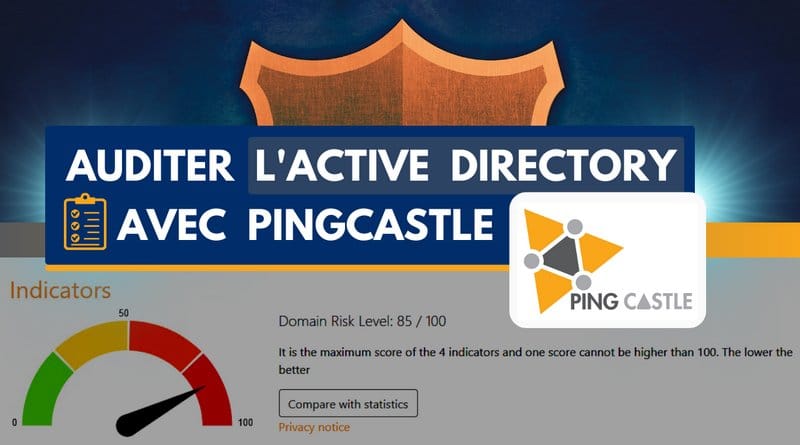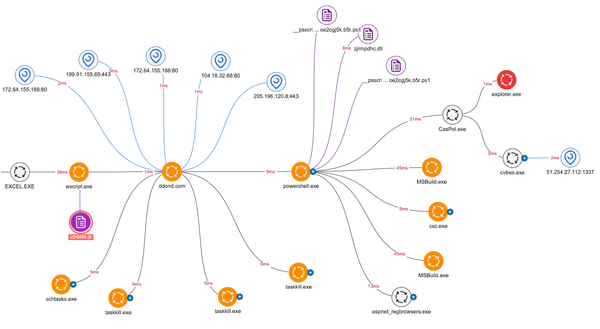Mastering PingCastle: Advanced Active Directory Security Assessment Techniques

In today's complex threat landscape, Active Directory security remains a critical concern for organizations of all sizes. As the backbone of enterprise authentication and authorization, Active Directory environments frequently serve as primary targets for sophisticated threat actors seeking to establish persistence and elevate privileges. PingCastle has emerged as one of the most powerful open-source tools for assessing Active Directory security posture, allowing security teams to identify and remediate critical vulnerabilities before attackers can exploit them. This comprehensive guide examines PingCastle's capabilities, implementation strategies, and advanced usage techniques for security professionals.
Understanding PingCastle's Core Functionality
PingCastle is a free tool that enables security professionals to assess the security level of their Active Directory infrastructure through comprehensive scanning and reporting. Its key capabilities include:
- Health Check Assessment: Evaluates your AD against security best practices
- Risk Mapping: Identifies potential attack paths and lateral movement opportunities
- Privileged Account Analysis: Detects excessive, dormant, or misconfigured privileged accounts
- Weak Configuration Detection: Pinpoints settings that could be exploited by attackers
- Report Generation: Creates detailed HTML reports with actionable remediation advice
- Risk Scoring: Provides a quantitative score to track security improvements over time
Before implementing PingCastle in your environment, it's essential to understand that it should only be run in environments where you have proper authorization. Due to its comprehensive scanning capabilities, it requires privileged access and will generate significant directory traffic.
Installation and Setup Process
Getting PingCastle operational in your environment involves several straightforward steps:
System Requirements
PingCastle runs on Windows systems with .NET Framework 4.5 or higher and requires:
- Windows 7 SP1 or higher / Windows Server 2008 R2 SP1 or higher
- .NET Framework 4.5+
- Domain user account (standard user is sufficient for basic scanning)
- Domain admin account (for advanced scanning options)
Obtaining and Configuring PingCastle
- Download the latest version from the official GitHub repository
- Extract the ZIP file to a directory of your choice
- No installation is required as PingCastle runs as a standalone executable
- Review the license agreement before first use
PingCastle's portable nature makes it particularly useful for security consultants who need to rapidly deploy assessment tools in client environments without installation headaches.
Core Assessment Methodologies
PingCastle employs several distinct methodologies to evaluate Active Directory security:
Health Check Assessment
The health check is PingCastle's flagship function, providing a comprehensive evaluation of Active Directory against Microsoft's security best practices and known attack vectors:
PingCastle.exe --healthcheck
This command evaluates over 100 different security indicators across several domains:
- Privileged Accounts: Identifies excessive privileges and risky account configurations
- Stale Objects: Detects unused accounts that could be leveraged in attacks
- Domain and Forest Configuration: Examines trust relationships and functional levels
- Password Policies: Assesses the strength of password requirements
- Administrative Groups: Analyzes membership in critical groups like Domain Admins
- Group Policy Objects: Evaluates GPO configurations for security weaknesses
The resulting report provides a concise "RISK" score (0-100) that quantifies your overall Active Directory security posture.
Advanced Attack Path Analysis
Beyond the basic health check, PingCastle offers sophisticated attack path analysis that maps potential lateral movement vectors:
PingCastle.exe --explorer --level Full
This analysis leverages graph theory to identify:
- Shortest paths to Domain Admin privileges from standard user accounts
- "Key Players" who represent critical nodes in privilege escalation paths
- Trust relationship vulnerabilities between domains
- Security delegation issues that create unintended privilege escalation opportunities
This functionality is particularly valuable for organizations conducting red team exercises as it highlights the same paths that sophisticated attackers might leverage during an actual breach.
Comprehensive AD Security Report Generation
PingCastle generates detailed HTML reports that serve as the foundation for remediation efforts:
PingCastle.exe --healthcheck --server domaincontroller.example.com --level Full --output C:\Reports\
These reports include:
- Executive summary with risk scores and critical findings
- Detailed explanations of each identified vulnerability
- Technical context explaining the exploit potential
- Practical remediation steps for each finding
- Historical comparison with previous assessments
- Custom branding options for professional deliverables
The report structure makes PingCastle particularly valuable for security teams that need to communicate findings to both technical and non-technical stakeholders.
Advanced PingCastle Usage Techniques
While basic health checks provide valuable insights, advanced usage techniques unlock PingCastle's full potential:
Active Directory Certificate Services Assessment
With the increasing focus on AD CS vulnerabilities like ESC8, PingCastle now includes specialized scanning for certificate services:
PingCastle.exe --scanner adobjectscan --categoryobject certificate
This specialized scan identifies:
- Dangerous certificate templates with client authentication enabled
- Certificate Authority misconfigurations that allow privilege escalation
- Enrollment agent vulnerabilities that permit certificate theft
- ACL issues on certificate-related objects
Organizations implementing Active Directory Certificate Services should prioritize this assessment to prevent increasingly common ADCS-based attacks.
Detecting Kerberos Delegation Issues
Kerberos delegation continues to be a significant security risk in many environments:
PingCastle.exe --scanner delegation
This specialized scan identifies accounts configured for:
- Unconstrained delegation: Allowing complete impersonation of any authenticated user
- Constrained delegation: Permitting impersonation for specific services
- Resource-based constrained delegation: Enabling modern but potentially risky delegation
- Protocol transition: Permitting conversion between authentication methods
These delegation settings frequently enable devastating attacks like Pass-the-Hash and other credential-based lateral movement techniques.
Identifying Dangerous ACL Configurations
Access Control List misconfigurations represent one of the most common yet overlooked attack vectors in Active Directory:
PingCastle.exe --scanner acl
This scan reveals:
- WriteDACL/WriteOwner permissions that allow privilege escalation
- GenericAll rights granted to non-administrative accounts
- Nest permission inheritance issues that create unintended access
- Group membership modification rights assigned to inappropriate accounts
ACL issues frequently enable the stealthiest attack paths, allowing attackers to maintain persistence without triggering typical detection mechanisms.
Custom Rule Development
Advanced users can extend PingCastle's capabilities by developing custom rules tailored to organization-specific security concerns:
PingCastle.exe --healthcheck --rulefile C:\CustomRules\custom_rules.xml
Custom rules allow for:
- Organization-specific policy enforcement checks
- Industry-specific compliance verification
- Custom threat modeling based on specific attack scenarios
- Proprietary security requirements validation
This extensibility makes PingCastle particularly valuable for organizations with unique security requirements or sophisticated security operations centers (SOC).
Interpreting PingCastle Results
The true value of PingCastle lies not just in identifying issues but in properly interpreting the results:
Understanding the Risk Score
The overall risk score provided by PingCastle follows this general interpretation:
- 0-25: Strong security posture with minimal critical issues
- 26-50: Moderate risk with several important issues to address
- 51-75: High risk with numerous critical vulnerabilities
- 76-100: Severe risk requiring immediate remediation
This scoring system provides a quantifiable metric for tracking security improvements over time and comparing different domains within an organization.
Prioritizing Remediation Efforts
Not all findings require equal attention. Effective remediation typically follows this priority order:
- Critical vulnerabilities with known exploitation in the wild
- Direct paths to Domain Admin privileges from regular user accounts
- Dormant privileged accounts that could be leveraged in attacks
- Weak password policies that enable brute force attacks
- Outdated functional levels that lack modern security features
This prioritization aligns with the tactics used by actual threat actors, who typically focus on the path of least resistance to elevated privileges.
Integration with Security Operations
PingCastle delivers the most value when integrated into broader security operations:
Continuous Monitoring Framework
Rather than running as a one-time assessment, PingCastle should be integrated into ongoing security monitoring:
PingCastle.exe --healthcheck --generatereport --scorecardhtml C:\Reports\ScoreHistory.html
This approach enables:
- Trend analysis of security posture over time
- Regression detection when security controls weaken
- Effectiveness measurement of remediation efforts
- Security program maturity tracking through quantifiable metrics
Many organizations implement automated weekly scans and generate comparative reports to ensure continuous visibility into their Active Directory security posture.
Threat Hunting Integration
PingCastle findings can significantly enhance threat hunting capabilities by highlighting potential attack paths that should be monitored:
- Identify high-risk attack paths using PingCastle
- Implement targeted logging for activities along those paths
- Create custom detection rules for suspicious activities
- Establish automated alerts for critical control changes
This approach aligns perfectly with modern threat hunting methodologies that focus on attacker behaviors rather than simple indicators of compromise.
Security Automation with PingCastle
Advanced security teams frequently automate PingCastle operations using PowerShell:
# Scheduled PingCastle scan with email notification
$date = Get-Date -Format "yyyy-MM-dd"
$reportPath = "C:\Reports\PingCastle_$date.html"
# Run PingCastle
& C:\Tools\PingCastle\PingCastle.exe --healthcheck --server dc1.example.com --output $reportPath
# Send email with report
Send-MailMessage -From "[email protected]" -To "[email protected]" -Subject "Weekly PingCastle Report" -Body "Please find attached the weekly PingCastle report." -Attachments $reportPath -SmtpServer "smtp.example.com"
This automation ensures consistent assessment and immediate notification of security regressions.
Common Findings and Remediation Strategies
PingCastle typically identifies several common security issues across organizations:
Excessive Privileged Access
One of the most prevalent findings is excessive membership in highly privileged groups:
Finding: Too many accounts with Domain Admin privileges
Risk: Increased attack surface for credential theft and privilege escalation
Remediation:
- Implement a tiered administration model
- Remove unnecessary privileges following the principle of least privilege
- Create dedicated administrative accounts with time-limited access
- Implement Just-In-Time (JIT) administration for privileged operations
Stale User and Computer Objects
Dormant accounts present significant security risks:
Finding: High percentage of inactive user and computer accounts
Risk: Potential for undetected compromise of abandoned accounts
Remediation:
- Implement an account lifecycle management process
- Disable accounts after 30 days of inactivity
- Remove computer objects after 90 days of inactivity
- Implement regular access reviews for all accounts
Weak Password Policies
Inadequate password policies continue to enable many attacks:
Finding: Default or weak password policies
Risk: Vulnerability to password spraying and brute force attacks
Remediation:
- Implement strong password policies (15+ characters)
- Deploy fine-grained password policies for different user groups
- Implement password filters to prevent common passwords
- Consider passwordless authentication methods
Kerberos-Related Vulnerabilities
Kerberos misconfigurations remain a common attack vector:
Finding: Kerberoasting and AS-REP Roasting opportunities
Risk: Ability for attackers to obtain and crack service account passwords
Remediation:
- Use group Managed Service Accounts (gMSAs) instead of regular service accounts
- Implement AES encryption for all Kerberos tickets
- Disable accounts that don't require Kerberos preauthentication
- Monitor for unusual Kerberos TGS and TGT requests
Trust Relationship Issues
Domain trust configurations frequently contain security gaps:
Finding: Insecure domain trust configurations
Risk: Potential for trust relationship attacks and privilege escalation across domains
Remediation:
- Audit all existing trust relationships
- Implement SID filtering on all external trusts
- Disable SID history if not required
- Implement selective authentication for inter-forest trusts
Case Study: Financial Institution AD Security Improvement
A large financial services organization leveraged PingCastle to dramatically improve their Active Directory security posture:
Initial Assessment
The initial PingCastle scan revealed a concerning risk score of 82.5, with critical findings including:
- 47 accounts with Domain Admin privileges
- Over 500 inactive computer objects
- Numerous ACL misconfigurations allowing privilege escalation
- Several instances of unconstrained Kerberos delegation
- Weak password policies allowing 8-character passwords
Remediation Process
Over a six-month period, the organization implemented a structured remediation plan:
- Established a tiered administration model with dedicated admin workstations
- Reduced Domain Admin membership to just 5 service accounts and 3 break-glass accounts
- Implemented privileged access management (PAM) for just-in-time administration
- Removed all instances of unconstrained delegation
- Strengthened password policies to 16+ characters with complexity
- Cleaned up stale objects through an automated lifecycle management process
- Corrected all high-risk ACL misconfigurations
Results
Follow-up PingCastle scans demonstrated significant improvement:
- Risk score decreased from 82.5 to 24.3
- No direct paths to Domain Admin from standard user accounts
- Dramatic reduction in attack surface through proper privilege management
- Enhanced logging and monitoring for remaining attack paths
- Quantifiable security improvements for compliance reporting
This case study demonstrates how PingCastle can drive measurable security improvements when combined with structured remediation processes.
Advanced Security Considerations
Beyond the common findings, several advanced security considerations should be addressed:
Active Directory Auditing and Monitoring
PingCastle helps identify what to monitor, but implementing proper auditing is equally important:
- Advanced Audit Policy Configuration for critical AD events
- Object access auditing for sensitive AD objects
- Directory Service Changes monitoring for unusual modifications
- Security log management to ensure adequate retention and protection
Effective threat detection and response requires comprehensive logging of the attack paths identified by PingCastle.
Active Directory Backup and Recovery
Many organizations overlook the importance of secure AD backup and recovery processes:
- Implement regular system state backups of all domain controllers
- Test authoritative and non-authoritative restores regularly
- Maintain offline backups of critical AD components
- Develop disaster recovery procedures for complete AD compromise
The ability to recover from catastrophic events like ransomware attacks depends on proper backup procedures.
Administrative Tier Model Implementation
Microsoft's administrative tier model provides a framework for addressing many PingCastle findings:
- Tier 0: Domain controllers and AD administration
- Tier 1: Server administration
- Tier 2: Workstation and user support
This model prevents lateral movement between tiers and significantly reduces the attack surface exposed to end-user workstations.
Future Directions for PingCastle
As Active Directory threats continue to evolve, PingCastle development is focusing on several key areas:
- Cloud Integration: Enhanced scanning for hybrid and cloud-only directory environments
- Attack Simulation: Capabilities to safely validate identified attack paths
- Compliance Mapping: Expanded mapping to regulatory frameworks like NIST, ISO, and PCI
- API Capabilities: Enhanced programmatic access for integration with security platforms
- Enhanced Visualization: More sophisticated graphical representations of attack paths
These developments will ensure PingCastle remains a relevant tool as organizations transition to more complex identity architectures.
Conclusion
PingCastle represents one of the most valuable tools available for assessing and improving Active Directory security. By providing comprehensive visibility into potential attack paths, misconfigurations, and security weaknesses, it enables organizations to adopt a proactive security posture rather than merely reacting to breaches after they occur.
The most effective implementations of PingCastle combine regular automated scanning with structured remediation processes and integration into broader security operations. This approach ensures continuous improvement of the organization's security posture and significantly reduces the risk of credential-based attacks like Pass-the-Hash and other lateral movement techniques.
For organizations seeking to enhance their overall security posture, PingCastle assessment should be considered a fundamental component of a comprehensive Active Directory security audit methodology. When combined with proper remediation and ongoing monitoring, PingCastle provides the visibility necessary to defend one of the most critical components of enterprise IT infrastructure.




